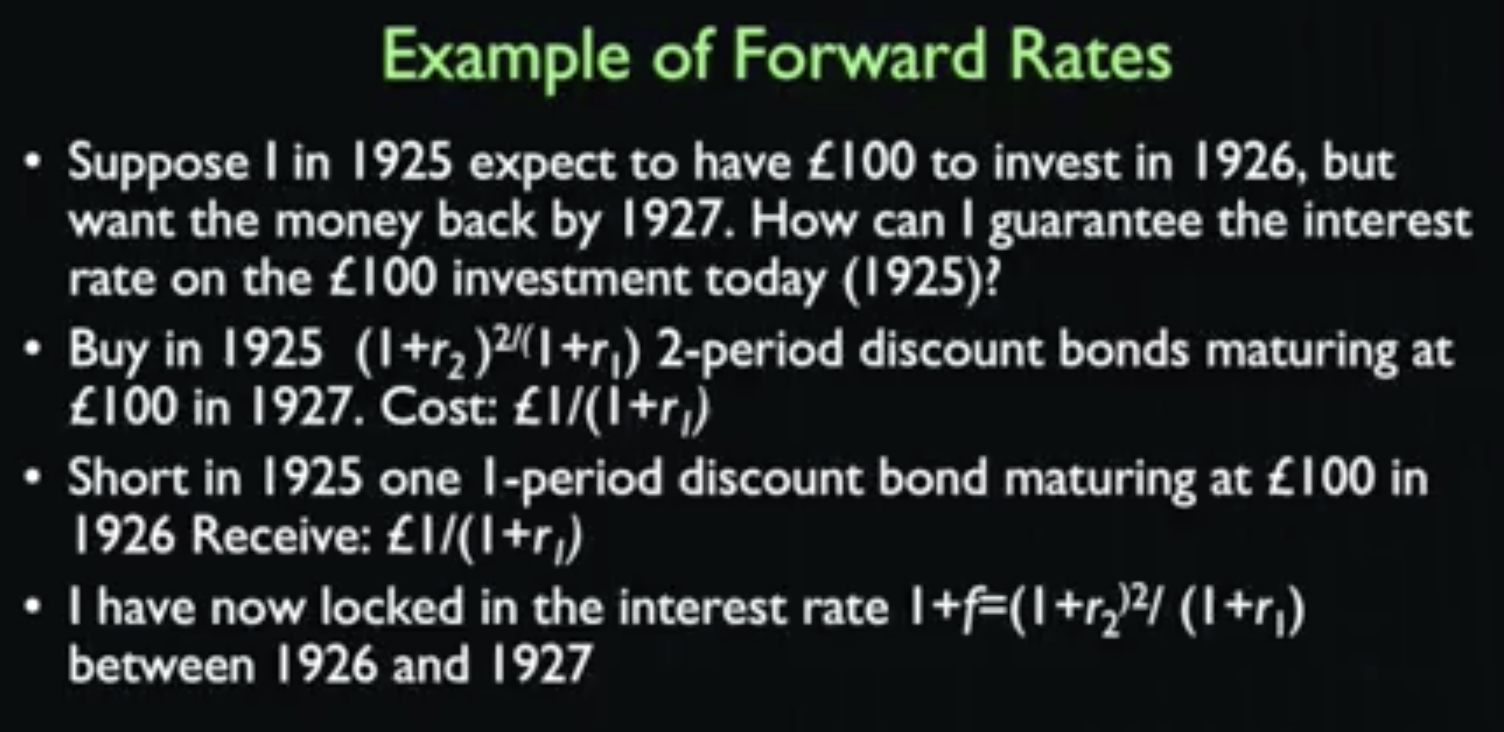Coursera Financial Markets
Notes from Coursera Financial Markets Course.
VaR - value at risk
- concept created after stock market crash after 1987
- quantify risk of investment or portfolio
- units $ for a given probability and time horizon
Stress Tests
- method of accessing risks to firms or portfolios
- see how firm will stand up under crisis
Beta - measure of how a stock price relates to the aggregate market
-
Market risk vs Idiosyncratic Risk (e.g. Steve Jobs Death)
-
Skatter Plot Regression Line - best fits data
-
Residual - distance between line and dot. Best fit = lowest residual sum for all dots
-
line equation y = mx + b.
- m is slope (how much y changes for 1 unit increase in x)
-
y is return on stock, x is return on market, m as beta, b is alpha in finance
- beta how much a stock co-moves with market (systematic risk)
-
-
-
Capital Asset Pricing Model:
- variance of stock return = beta ^ 2 X <variance of market return> (systematic risk) + <variance of residual in the regression> (Idiosyncratic risk)
-
-
Gold is negative beta. (negatively correlated to market returns)
- Help offset market shock.
Normal Distribution - Standard deviation 1,3
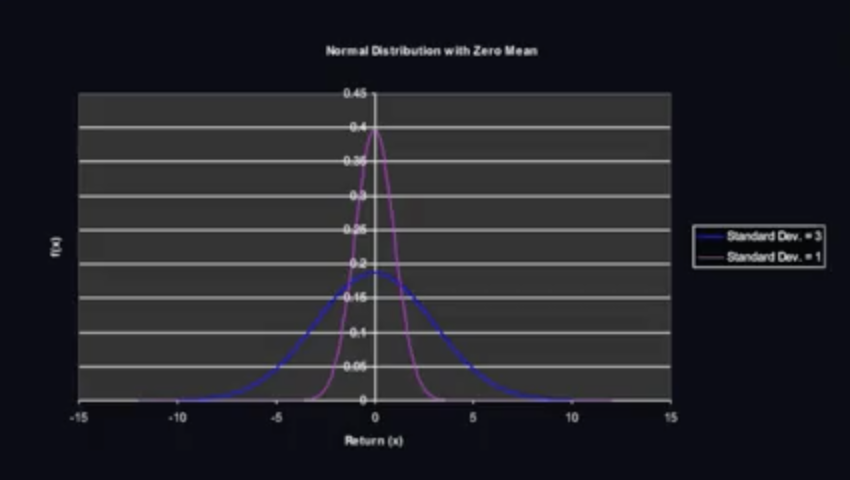
Finance does not follow Normal Distribution— tends to have fat tails
The standard deviation is √(p(1-p)/n)
Central Limit Theorem - Averages of a large number of independently identically distributed shocks are approximately normally distributed
- Can fail if underlying shocks are fat tailed (e.g Black Swan) or lose their independence
-
Cauchy Distribution - fat tail distribution
- Can get tricked into thinking fairly stable w/ risk I understand
- Stock price changes: -20%/+12% in single day
Covariance
-
Example, 2 startups with .5 probability of 1 million income and .5 for 0 (mean .5)
- COV = .25(.5*.5) (both succeed) + .25(-.5*.-5) (both failing) + .5(-.5*.5) (one succeeds and the other doesn’t. twice as likely since 2 ways it could go) = 0
-
Probably-weighted average.
- If independent, COV is 0. Good as an investor.
- ** Risk is determined by covariance!
- The market demands higher returns for the high beta stocks (high covariance with the market)
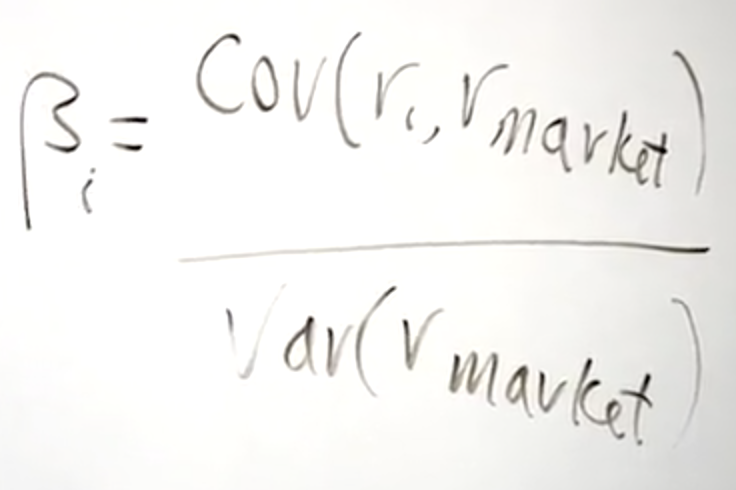
Insurance
- Risk Pooling - source of value in insurance
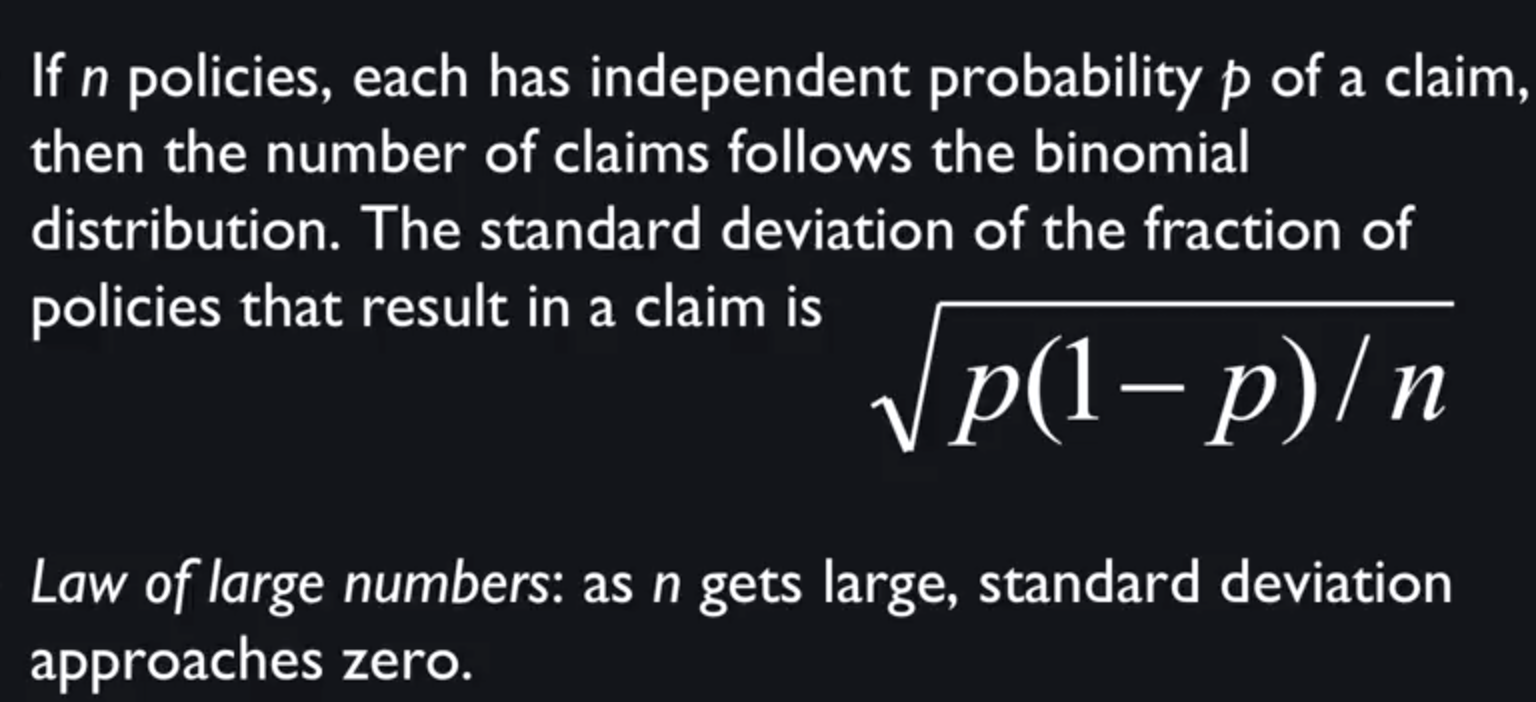
-
Not always easy to make idea work b/c of:
- Moral Hazard - take more risk b/c of insured
-
Selection Bias - insurance company can not see all risks e.g. Health Insurance attracts sick people
- aka Adverse selection
- Idea to guard against: For crop insurance, iInsure weather instead of crop
- McCarren Ferguson Act 1945 delegated insurance regulation to states.
- National Association of Insurance Commissioners (NAIC) creates standardized suggested laws.
Capital Asset Pricing Model (CAPM)
- Model of optimized portfolio. Asserts that every investor will hold that portfolio.
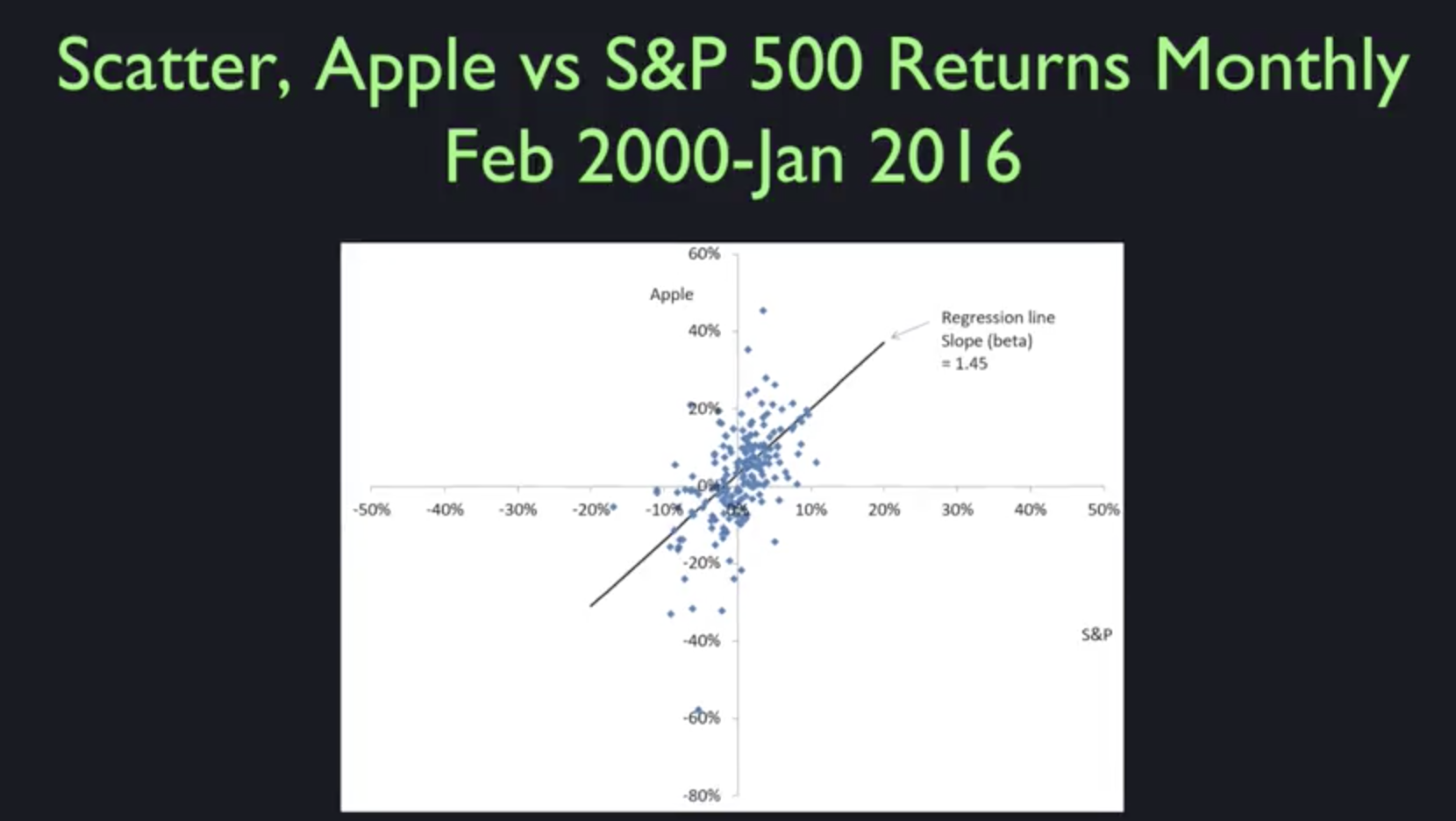
- Individuals should diversify, but it is difficult b/c have to buy fractional shares (use investment funds)
Credit Default Swap -
Short Sales - hold negative quantities of a stock.
- Can’t be part of optimal portfolio.
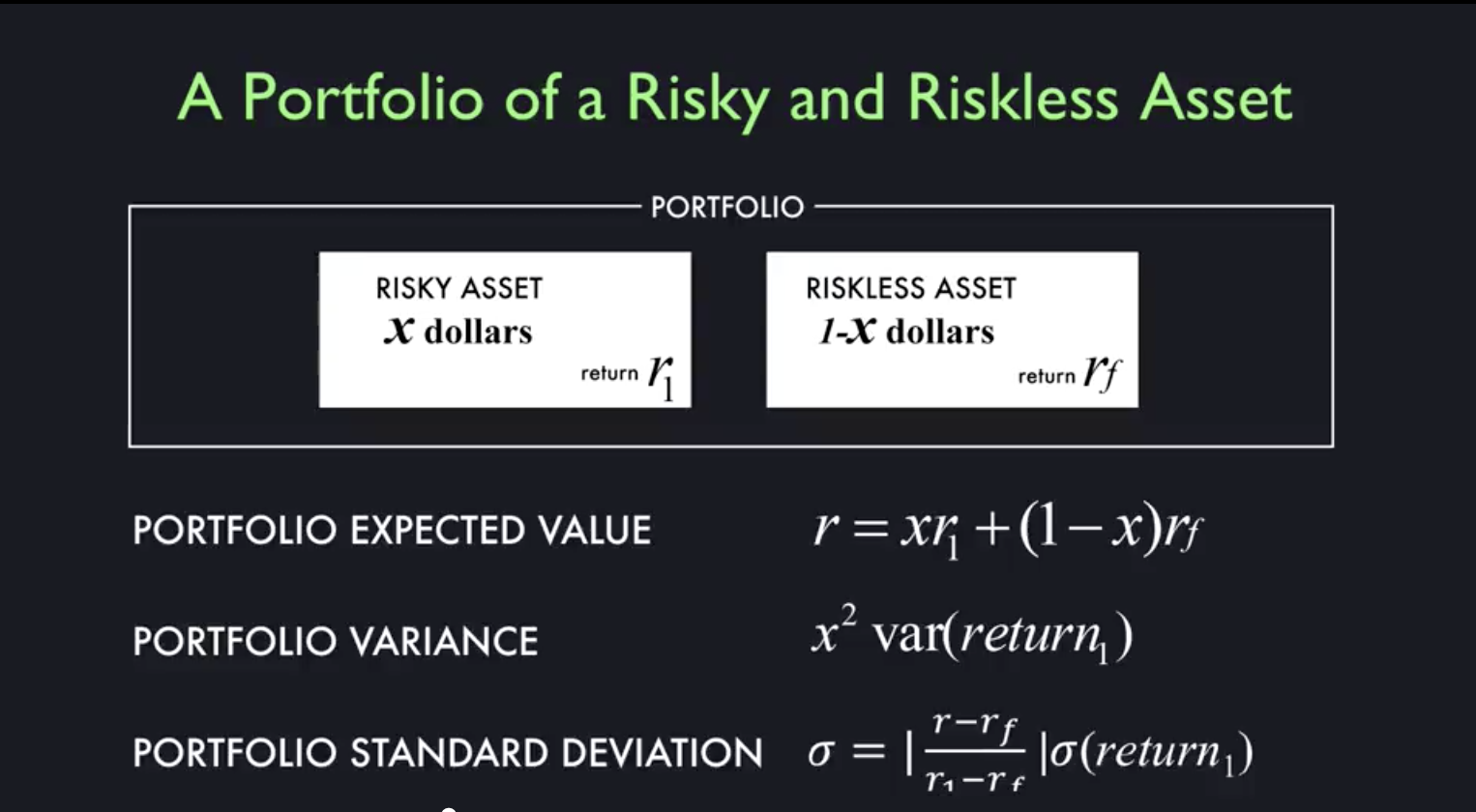
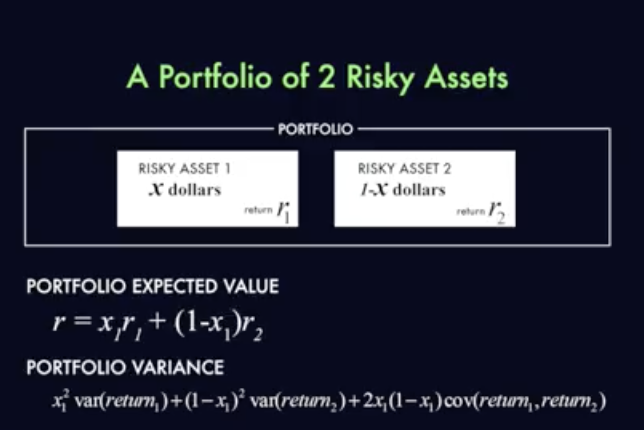
** Gordan Growth Model - present value given future growth
-
PV = x / r - g, where x is output at time of purchase, r is rate of discount, g is growth rate.
- g must be less than r
Limited Liability
- investors in stock can never be pursued for mistakes of company
- works b/c investor overemphasizes risk (like inversely lottery ticket)
- allows diversified portfolio
Inflation Indexed Debt
Unidad de Fomento - Unit of Development (Chile 1967) - Unit of account tied to consumer price index
Representativeness heuristic - something seen in the past is representative of what we’ll see in the future
Random Walk Hypothesis - Each change is independent of previous changes and totally unforecastable
Efficient Market Hypothesis - revolution in the 50s
PDV of stock (Gordon Model): P = E/(r-g) or P/E = 1/(r-g)
- says P/E should be the same for every stock
Behavioral Finance
- ppl want praise
Prospect Theory - revolution in the 90s
- Old Theory: Utility Function
-
New Theory: Value Function - Utility dependents on reference point
-
People have skewed representations of probabilities:
- People will not take small bets, but worry about small gains/losses.
- People are willing to take large bets to get back to positive.
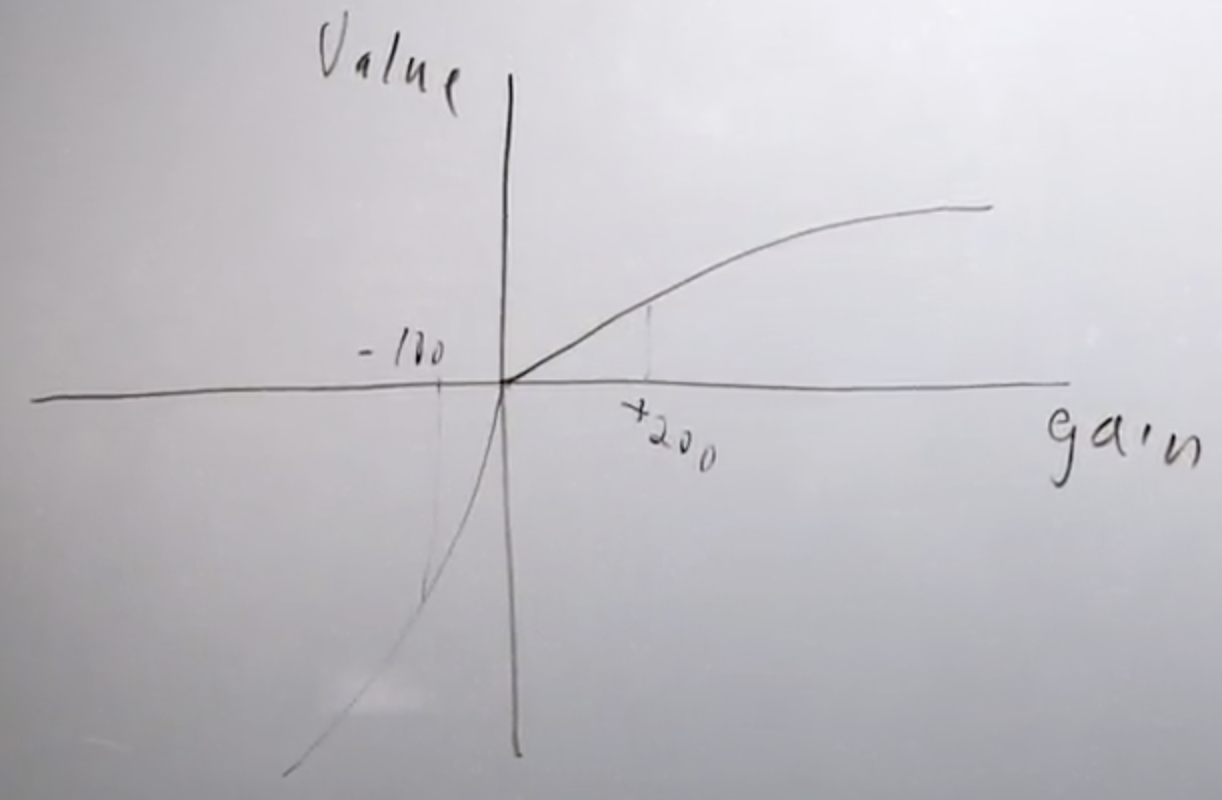
- (0,0) is present time. Always a kink. Steeper curve for lose side— loss aversion.
-
Wishing Thinking Bias e.g. My team has higher chance of winning
Overconfidence in people e.g. Hiring a CEO
Cognitive Dissonance - mental conflict that occurs when one learns one’s beliefs are wrong i.e. avoidance behavior
- Disposition Effect - Will ignore bad memories
Mental Compartments - fun vs. retirement portfolios
Attention Anomalies - e.g. everyone paying attention to same stock == inflated prices
Anchoring - stock prices are anchored to past prices
Disjunction Effect - inability to make desicision that is contingent on future infomation
Newcomb’s paradox - People sometimes change their behavior when they learn about a prediction which has been made about the future.
Magical Thinking - i.e.. superstitions
Federal Funds Rate - shortest term interest rate (overnight), only banks
- Target rate by federal reserve
- EONIA (European Over Night Index Average) - European equivalent
Causes of Interest Rates
- Technological progress i.e. rate of progress is about 3%
- Time preferences i.e. people are natural impatient
- Advantages to roundaboutness e.g. pay an farmer to grow more so you can buy it
Compound Interest - (1 + r/n)^nt, where n is the number of times compounding per year
- Continuously: Pe^rt
Discount Bond
- No coupon payments, buy at discount
- Term T, Yield to Maturity (YTM) r: P = 1/(1 + r)^r, P < 1
Present Discounted Value: PDV = 1/(1 + r) ^ n ** Important thing to calculate
Conventional Coupon Bond
- Issued at par e.g. not discount
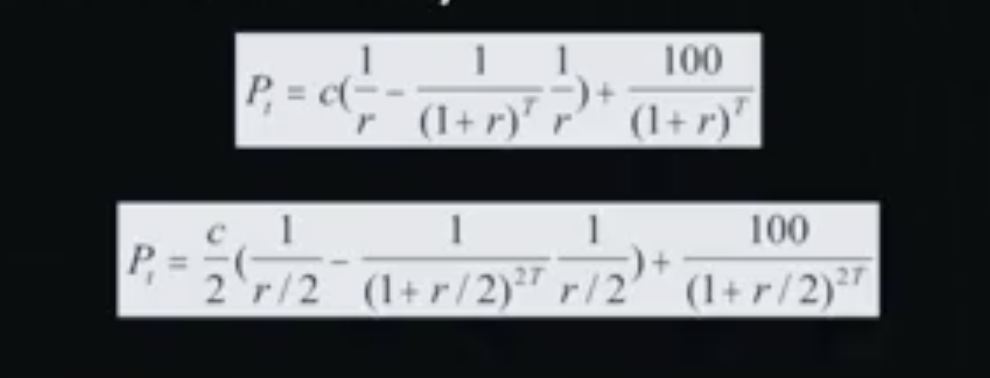
- Annual vs 6-month compounding
** Market risk of bonds: coupon is fixed, but market price of bond fluctuates
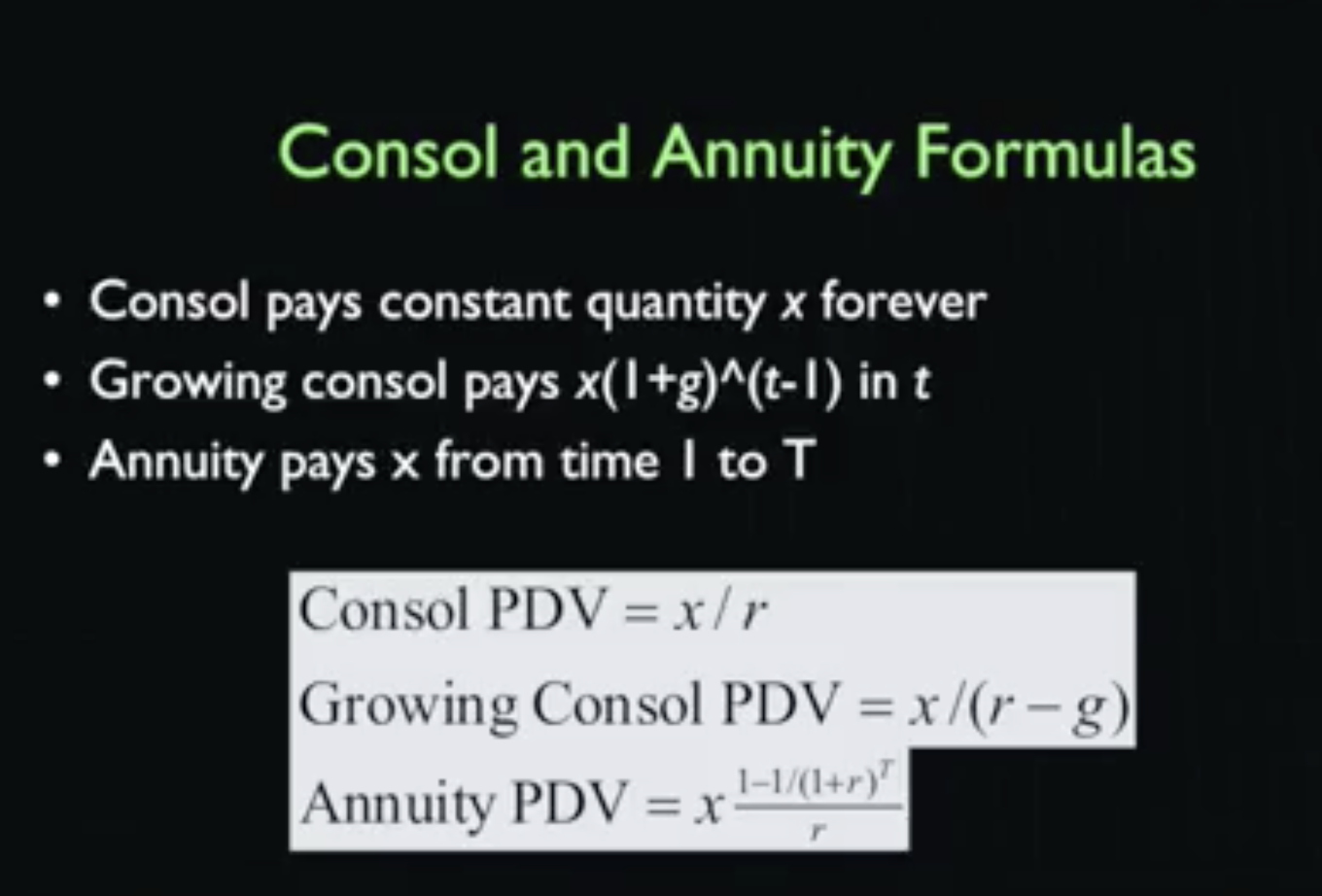
- Consols like land
Forward Rates - interest rates that represent future bond interest rates ???
Inflation and Interest Rates
- Nominal rates (not taking into account inflation) are quoted in dollars
- Real rates are quoted market baskets
- Indexed bonds (TIPS) - pay in real rates
Leveraging - putting more money in the asset than you have
Market Capitalization - price per share X number of shares of common stock (US 151% of GDP)
Common (equity vs Preferred Stock - preferred has a specified divined which does not grow through time; does not need to be paid
- can’t pay common dividend until preferred is paid
Stock dividend - pay dividend in stock
- Dilution
Share repurchase - same as dividend, but tax break
PDV of Expected Dividends (Gordon Model): P = E/(r-g) or P/E = 1/(r -g)
- Low P/E means r is high or g is low
-
expected return on a stock is a function of it’s covariance with the market
- Riskier if covary with market
- Stocks that covary should have high r and low P/E
- Value investing says invest in low P/E
Lintner Model of Dividends = dividends correspond to earnings
Inverted Yield Curves - short term interest rate are above long term rates
-
Indicator of recession
- Sometimes on purpose to combat inflation
Commercial Real Estate
Real Estate Partnerships
-
Direct Participation Program (DPP)
- Flow through vehicles
- For accredited investor
- Can’t be perpetual
Limited Partnership
-
General partner runs the business and does not have limited liability (LL)
- Must own at least 1%
-
Limited partners are passive investors w/ LL
REITs (Real Estate Investment Trusts)
-
Restrictions prevent regular businesses from becoming REITs
- e.g. Must pay out earnings
Mortgages
Good investment : house price below construction cost in area on the up
30-year mortgage rate tracks 10-Year Treasury
CMO - Collateralized Mortgage Obligation - pool of mortgages sold to investors
-
traunches e.g. AAA
- reached into higher traunches
CDO - Collateralized Debt Obligation - same thing as CMO except w/ different forms of debt
MicroPrudential - regulation to protect one person
MacroPrudential - protect whole system
5 levels of regulation:
1. Within-firm regulation
-
Board of Directors
-
Tunneling - minority of shareholders steal money
-
More common in civil law countries
2. Regulation set by trade group
3. Local regulation
4. National regulation
- Civil Law = laws are only est. by legislature
- Common Law = leg. and courts
5. International regulation
Public securities - approved by SEC, have to make quarterly filings
FASB - Federal Accounting Standards Board
-
Defines GAAP
- Net Income
- Operating Income = revenue - cost of doing business
Securities Investor Protection Corporation (SIPC) - like FDIC - protect account at brokers
Forward contract - contract to deliver at a future date (exercise date) at certain price (exercise price)
- Example: Farmer sells to warehouse
- Storage of grain is the hedger
- Can also be used with currency
-
Problem: can’t get out of them, trust
- Future’s market is way to overcome problems
-
Like a pair of zero coupon bonds
- Forward Rate reflects interest rates in 2 currencies
Forward Exchange Rate = Spot Exchange Rate * (1 + <interest rate currency 1>)/(1 + <interest rate currency 2>)
Future contracts
- standardized retail product
- Rely on margin calls to guarantee performance
- Fair value = spot price * (1 + r + s) where r is interest rate, s is storage cost
Options - used to manage risk e.g. put a floor on loses.
Call option - right to buy
Put option - right to sell
- Unlike Forward Contract, not bound to buy/sell
Exercise date - option expires
Exercise price - price at which buy/sell
Underly - underlying asset
Put-Call Parity Relation
- You don’t need put/calls because they are related through the put-call parity. Only for convenience.
- Price of Stock = Call Price + PDV Strike + PDV Dividends - Put Price
- 
Closed-end fund - like Mutual Fund except buy individual funds
Inequality is due to unmanaged risk.
Human Capital
- Study risk management and finance
- Think about your positioning in history. How do I fit in to historical events happening right now? Rather than thinking about personal life cycle.
- Maintain human capital in changing world. Keep thinking about what skills you have will be important and needed by others under maybe different conditions
